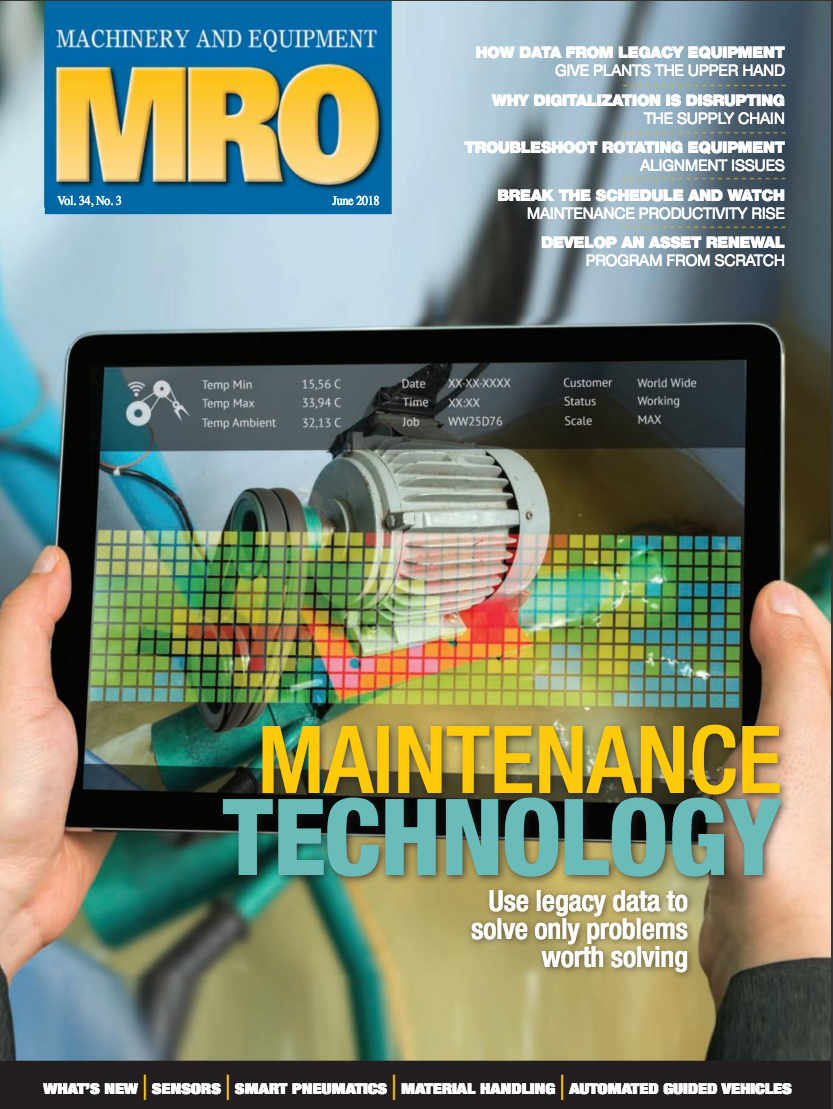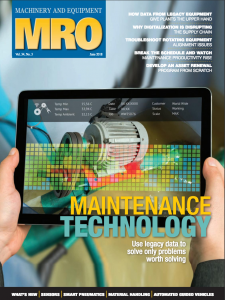
Data as a practical problem solver
Maintenance optimization and reliability engineering in the age of digitalization.
June 11, 2018 | By Rehana Begg

 Across a global spectrum of technological disruption, industrial manufacturing plants are wedged somewhere between rhetoric and reality.
Across a global spectrum of technological disruption, industrial manufacturing plants are wedged somewhere between rhetoric and reality.
The starting point and context for each organization are different, which explains why mixed reactions about the impact of digitalization range from “the time for digital is now” to the outright skewering of artificial intelligence and machine learning as hype.
One could be tempted to agree that disruption may not be the silver bullet many expect it to be. There are good arguments against overselling the abilities of deep learning; not the least of which is that it provides fresh risk.
But, for the most part, the trend has been crystallized. The economic and technological drivers have been validated. McKinsey research reveals that by adapting current technologies, 45 per cent of the activities individuals are paid to perform can be automated. Other research reveals that by 2020 an estimated 50 billion devices around the globe will be connected to the Internet; two-thirds of them are categorized as sensors, actuators and other intelligent devices that monitor, control, analyze and optimize.
The role of data in predictive maintenance is thriving. The ability to aggregate and then analyze data is crucial to predicting malfunctions. Even traditional condition monitoring technologies – vibration, ultrasound and thermography – require capabilities for creating, handling and making use of data.
Resistance to the evolving landscape can set firms back, given the exponential speed of change. Focus instead on the value that data could bring. In the June 2018 issue of Machinery and Equipment MRO, Blair Fraser (“Sensing Problems,” page 10) explains that when “life extension of assets” is top priority, the real value comes from what you do with the collected data. Asset owners needn’t focus on replacing current machinery with new, state-of-the-art machinery and equipment. Nor is it necessary to add unnecessary sensors. It turns out that legacy equipment houses stranded data that may give plants the upper hand. The key is to get that data out and learn to make sense of it.
In the datasphere, start-ups invariably play by a new set of rules of engagement and are blowing things up. Rajiv Anand, CEO of Quartic.ai, proves this with his company’s sensor-based, machine-learning predictive maintenance platform (“Make a Decision,” page 14). By synchronizing contextual data with a facility’s SCADA system, operators can have real-time visual updates and early warnings of impending failure. Training in data science is optional.
I’ll leave you with one other application of asset-performance improvement techniques. I had the pleasure of interviewing Dr. Chi-Ghun Lee, director of the Centre for Maintenance Optimization and Reliability Engineering, in Toronto. His research turned decision-making tools on their heads when he applied asset performance principles to predict the quality of water at the Mtendeli refugee camp in Tanzania (“In Good Health,” page 22). Both noble and ingenious, Lee’s research is an attempt to ensure the quality of water is acceptable for consumption.
New iterations of deep machine learning and prognostic maintenance through digitalization are far from being universal problem solvers, but the ubiquity forces organizations to react on multiple fronts. Some will undoubtedly struggle against the challenges posed, though they present unprecedented opportunities. Think of it instead as a necessary tool among many.
Rehana Begg is the editor of Machinery and Equipmnet MRO. Reach her at rbegg@annexbusinessmedia.com.
